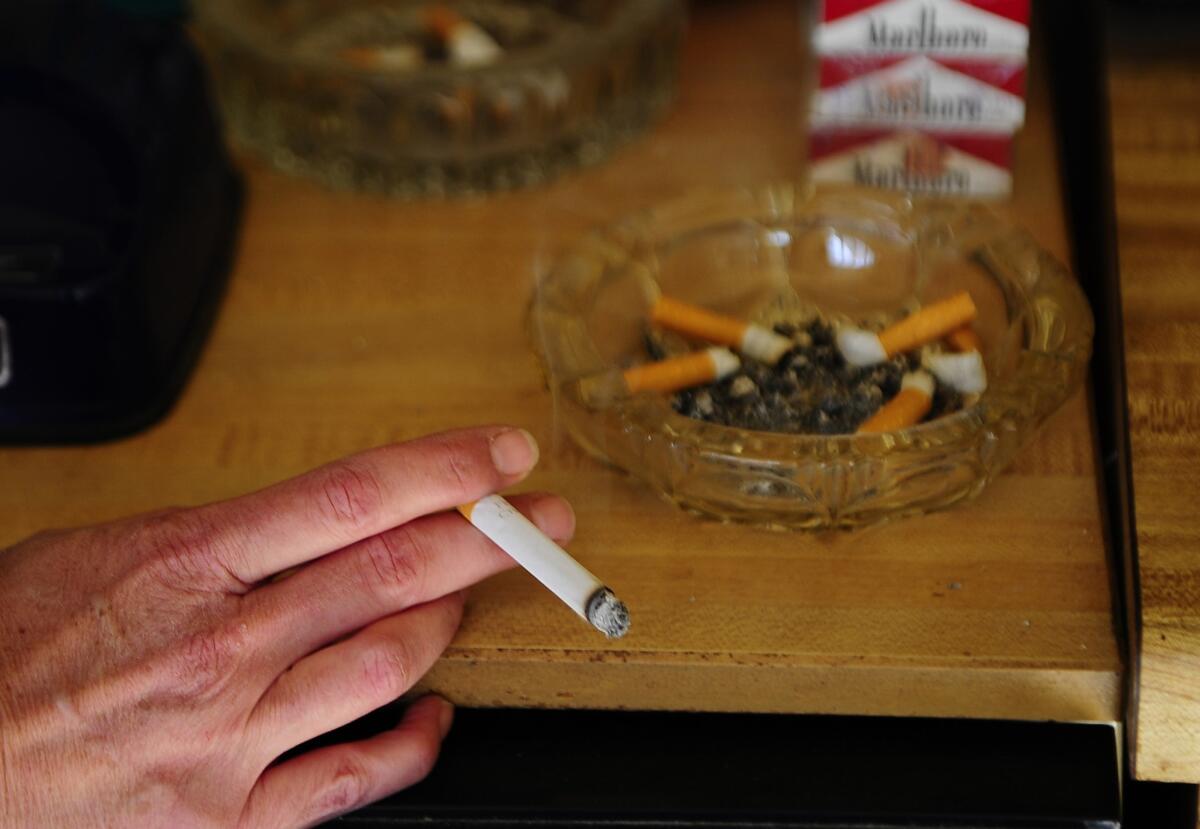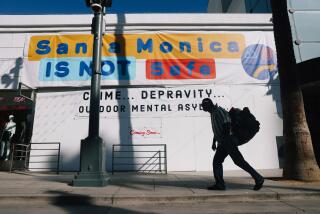Op-Ed: Should public housing be totally smoke-free?

The federal government has proposed to ban lit tobacco products inside public housing in a push to make hundreds of thousands of units across the country smoke-free.
- Share via
The federal Department of Housing and Urban Development is working on new regulations that would bar people living in public housing from smoking tobacco not only in the buildings’ indoor common areas and administrative offices, and not only within 25 feet of the buildings, but also in their own apartments.
There are some rational arguments against such a policy. While it’s true that the law in California and many other jurisdictions already gives landlords the right to ban smoking in apartments, the federal government, and the public housing agencies it funds, aren’t just any landlord. They provide housing of last resort to impoverished people. It’s one thing to let a private property owner set the terms of a lease when the potential tenant has the freedom to pass up a unit. But people in public housing generally don’t have another option, and for the government to insist that the poor refrain from engaging in an otherwise legal activity in the privacy of their own homes suggests a kind of creepy nanny-state overreach. After all, the poor have the same right to slowly kill themselves with tobacco as anybody else. And such a ban could create a burden for older or physically disabled smokers if they must leave their building every time they want to light up.
Nonsmokers in public housing are also there because they can’t afford to live elsewhere, and they deserve protection at least as much as the smokers do.
But ultimately we think the government’s decision is the right one. (Public comments on the proposed rule will be accepted until Jan. 19.) Smoking, as we all know, is unhealthful, and secondhand smoke is a silent killer. Nonsmokers in public housing are also there because they can’t afford to live elsewhere, and they deserve protection at least as much as the smokers do. Nonsmokers with physical disabilities shouldn’t be forced to inhale neighbors’ secondhand smoke (and HUD says it is seeking recommendations during the public comment process on how to accommodate disabled smokers covered by the Americans With Disabilities Act).
Further, the cost of renovating and maintaining units falls to the taxpayers, and property management experts say it costs up to four times as much to clean an apartment recently vacated by a smoker. The Centers for Disease Control and Prevention estimated last year that ending smoking in public housing would save $153 million a year by reducing renovation costs, saving on repairs from fires caused by smoking and lowering healthcare costs from secondhand smoke.
The proposed ban would go into effect in complexes only after open discussion with tenants, who will be able to influence building-specific rules, such as where to place — or whether to have — designated smoking areas outside the 25-foot zone, which HUD says could include partially enclosed shelters (useful in cold and rainy climates). It would include more than 9,400 units owned by the Housing Authority of the City of Los Angeles, which currently has no smoking regulations.
Unanswered is how HUD intends to enforce the rule. In a recent National Public Radio interview, a resident of a Washington public housing complex pointed out that police have been unable to keep people from smoking marijuana in their apartments. Banning tobacco smoking would just add more responsibilities to an already ineffective policing effort. And the stick used to compel tenants to comply has yet to be determined. In most cases, the ultimate penalty for breaking public housing rules is eviction. HUD Secretary Julian Castro said he hoped that public housing authorities “would work with residents to prepare them for this change so that any kind of punitive measures like evictions are avoided at all costs.” That’s the right goal.
There’s some history to this. HUD in 2009 began urging the public housing agencies it finances to make their properties smoke-free, and more than 600 agencies comprising 228,000 units did so. Expanding and formalizing the ban would cover all of the nation’s 1.2 million public housing units, which house some 775,000 children. It would also include 500,000 units inhabited by at least one elderly or disabled person. Banning smoking in such facilities would not only improve the overall quality of life for most tenants but would also reduce smoking-related costs for the taxpayers. Those gains trump the disadvantages.
Follow the Opinion section on Twitter @latimesopinion and Facebook
More to Read
A cure for the common opinion
Get thought-provoking perspectives with our weekly newsletter.
You may occasionally receive promotional content from the Los Angeles Times.






